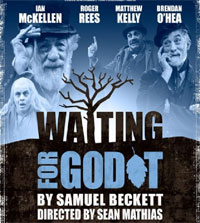A recent study done by a South African company, Youth Dynamix, has shown some interesting results which lead to an article in yesterday’s Sunday Times.
The Sunday Times article titled, Material world reels in the young, painted a picture of South African youth as more materialistic than the previous generation. The study done by Youth Dynamix studied South African tweens between the ages of seven and fifteen and used a range of four different methodologies. The BratTrax 2009/2010 study (the fourth study of its kind done) showed that 85% of the respondents interviewed believed that money made them happy.
The children in the study fall in the age cohort[1] of the Generation Y market. The members of Generation Y are children of baby boomers and, depending on the source were born between 1977 and 1994, or between 1982 and 2000. The members of Generation Y can be divided into three sub segments: Gen Y adults (ages 19-28); Gen Y teens (ages 13-18) and Gen Y “tweens” (ages 8-12). (Schiffman and Kanuk; 2010:410)
The Gen Y tweens spend and influence roughly $1.18 trillion in purchases worldwide, know brand images better than an advertising expert, spend a lot of time online and affect their parents’ brand choices. (Schiffman and Kanuk; 2010:411) The result of these findings is that a lot of money, more than $15 billion, is being spent annually to directly target and advertise to children.
Parents aren’t helping the situation along, as fast-paced lifestyles have resulted in parents from middle and upper-middle income homes, are using money to compensate for their lack of involvement in their children’s lives.
I have no direct experience as a parent, and therefore can’t attempt to understand the delicate nature of the relationship between parents and their children. But I have witnessed many hysterical fits and tantrums in shopping centres, which clearly indicate who the controlling force in many South African households is.
In conclusion, I would like to paraphrase a quote by education specialist Janine Shamos from the Sunday Times article, “We have manoeuvred ourselves into a situation where we are going to have a mentally and physically unhealthy generation who are confused by what they want and need”.
Sources:
Schiffman, L.G. & Kanuk, L.L. 2010. Consumer Behaviour. Tenth Edition. Pearson Education, Inc. New Jersey.
Naidoo, S. 2010. Material world reels in the young. Sunday Times Newspaper. South Africa.
[1] A cohort is a group of individuals born over a relatively short and continuous period of time. (Schiffman and Kanuk; 2010:410)




 While soccer fever has taken over South Africa, I can help but wonder whether the beautiful game has become overshadowed by the awful noise.
While soccer fever has taken over South Africa, I can help but wonder whether the beautiful game has become overshadowed by the awful noise. There is already an enormous amount of online backlash as to the harmful effects of vuvuzela. Many sites have cited the possible long-term effects that prolonged exposure to the noise of vuvuzela’s could have on a person’s hearing.
There is already an enormous amount of online backlash as to the harmful effects of vuvuzela. Many sites have cited the possible long-term effects that prolonged exposure to the noise of vuvuzela’s could have on a person’s hearing.